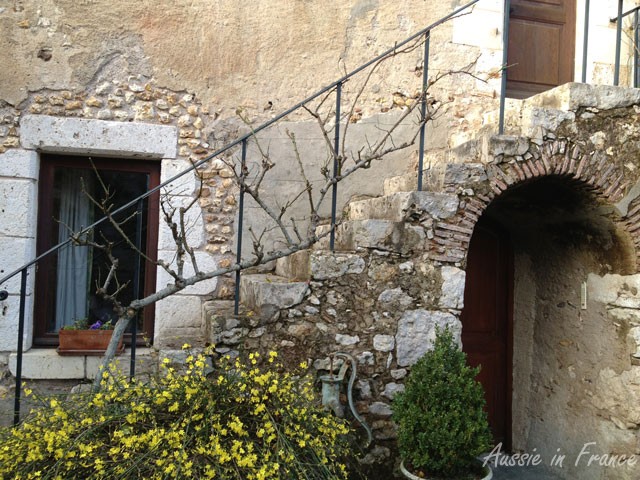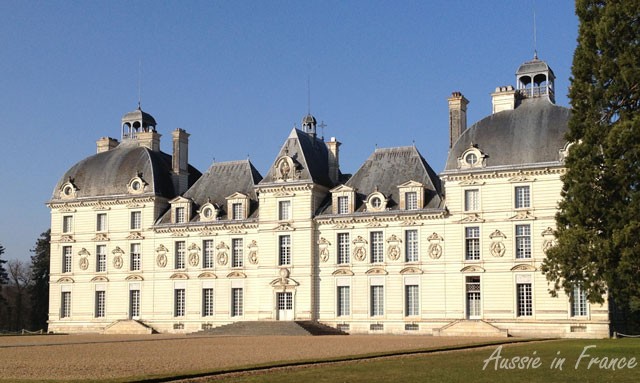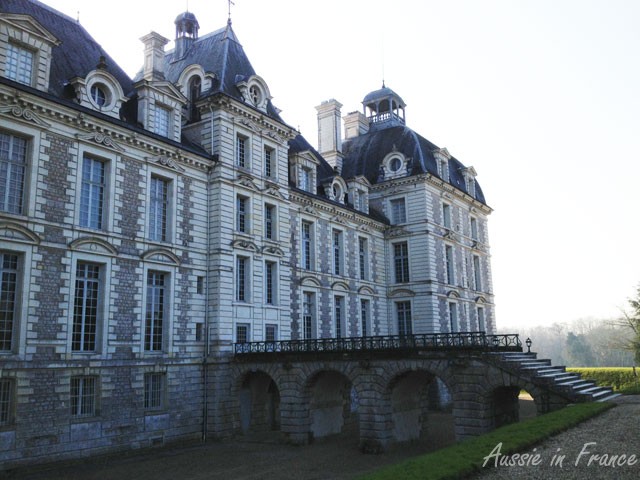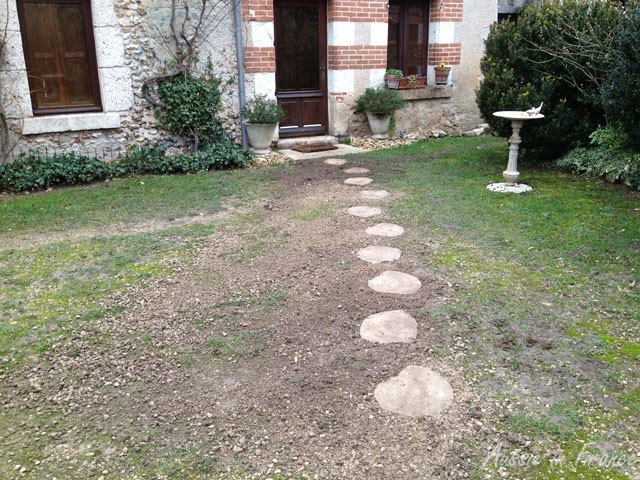We went to visit Mr and Mrs Previous Owner recently and I wanted to know what they did to get rid of the moss on the front stairs. “Sur le perron“, replied Mr Previous Owner. “No, the front steps”. “Oui, le perron“, he insisted.

And here I had been labouring under the misconception all these years that the perron was something quite different. According to my Larousse dictionary, it is an outside staircase with a small number of steps ending in a platform leading to a front door, as can be seen in the following photo.

I check my Dicobat building dictionary and it doesn’t mention anything about the number of steps, so I can now talk about “notre perron”. As far as I know, we have nothing in English to describe this concept.

On another but slightly related subject, we’ve been looking for a solution for some time to stop treading mud into the house when it rains, particularly in winter. The area in front of the house is a combination of grass and gravel with no clear delineation.
We recently went to Truffaut to see what we could find. There was a large selection of pas japonais (pas meaning step in this context). For some reason, I thought that pas japonais were slightly staggered to the left and right to naturally follow your steps.

After buying the last 10 pas we liked, we laid them in light rain and I posted a photo on Facebook. “I would call them stepping stones”, said a friend. She’s right of course. I was so disappointed. We’ve ordered some more for the rest of the garden but I can see we’ll have to lay the other ones again. It’s so annoying trying to remember whether you should be starting with your left leg or your right leg. Sigh.





Hi Rosemary. I’d call them front steps. Not our fault the French have a specific word for it……
It’s always interesting, though, to see which specific words in one language and not in another.
Hello Rosemary!
As you wrote the “perron” is both the stairs + the platform,, but it can also mean the platform itself (“il m’a reçu sur le perron”… can also be an understatement to say he didn’t invite me inside his house….)
“Pas japonais” is sort of “marketing concept” because everybody knows what a japanese garden looks like and it brings some exotic touch… The french generic word is “dalle” or “dalle de jardin” to be a little bit more specific…
“La dalle la plus tendance aujourd’hui est le pas japonais. “Cette allée irrégulière est formée grâce à des dalles de formes différentes. Elles résistent aux intempéries et aux chocs.”
http://dalle.comprendrechoisir.com/comprendre/dalle-jardin
I tried to find a reference to “japanese step” (in english) and found something quite interesting mirroring your remarks about how to walk them (is this good english???) that I wanted to share with you, and your readers…
“they are never put in even gaps. Do you know why? It is to create a sense of adventure. Sense of non-routine. Because the stones are not in perfectly equal spaces, you need to pay attention to your steps… or you might trip. This creates a sense of adventure in what would be a mandane, boring task of merely “walking”. Fascinating, isn’t it?”
Adventure in the garden! I’ll go for it!!!!
Hi Ago, well, there you go – I like a sense of adventure which is why our pas japonais are not quite straight!
Hi Rosemary;
OK, this is what I have learned from using building codes and zoning bylaws for over 30+ years. Common word for perron is front steps. can also be located on side and back.
If you are translating a technical document a perron would be referred to as a “stairway” which may consist of a top landing and a bottom landing but not always both and, a number of risers. a landing is required at the top of the risers (steps) so you can stand to open or close the door but not always required at the bottom. The minimum depth of the top landing is usually 90cm. Older buildings often do not have a landing.
When the stairway is covered with a roof but has no walls it would be called a porch;
if partially covered and wider than just a stairway to a door a veranda may apply.
A deck would be used if there is no roof but it may have an open trellis.
the word stoop is also found in Webster. The latter not often found in Canadian technical documents.
and,
a dalle is what we call a concrete paver which can take any form except when you have a “pas japonais” they are called stepping stones. Stepping stones can be cut from natural stones or can be concrete (beton) cast in a mold. cement (ciment) is often commonly used, but never correct.
now my 2 cents to fix your moss problem. the best solution is to have positive drainage from both the top and under the concrete. 1 mm to 1 cm; 1% slope is recommended. This allows the water on top to drain away. then a min of 15cm of drainage material such as crushed stone on the bottom of the concrete so that it has a chance to dry when it does get wet. + wash down the concrete with soap at a regular interval. Moss needs organic material + water to take hold and live.
For older established perrons where you can not change the drainage pattern then give it a good cleaning with a pressure washer (soap) before applying a sealer. The sealer is usually a polyuréthane liquid which is rolled on when the concrete is dry. Good for 5-10 yrs. It fills the capillary holes in the concrete so organic material can not build up. http://tinyurl.com/lw8zso9
cheers
conrad
Thank you, Conrad, for that very complete answer! So far, I’ve brushed away the moss because the natural stone is so old that I have been quite reticent about even using a water jet. I hadn’t thought of soap though, so will wash the steps down with soapy water next time we go. We’ve actually started the sealing process but are using limewash since the steps aren’t concrete. After we have finished, I’ll write a post on it.
Hi Rosemary! I’m in your SITS-tribe! Nice to meet you and your blog! 😉 And now I even learned two new words in French today… and I haven’t had French in years!!
Hi Sylvia, thank you for stopping by. I have a bad bout of the flu this week so may not be up to participating very much I’m afraid.
Oh no! Hope you’ll feel better soon!
I think you could use the word perron in English, especially for classical buildings, and have it understood by architectural historians. Sorry to hear about your flu. Hope you don’t take too long to recover.
Thanks Susan. I thought I’d be feeling much better today but I’m not …
Hello! Visiting from your SITS tribe and enjoying the French lesson! A tout á l’heure!
Hi Paige, glad you enjoyed the lesson. A new one tomorrow.